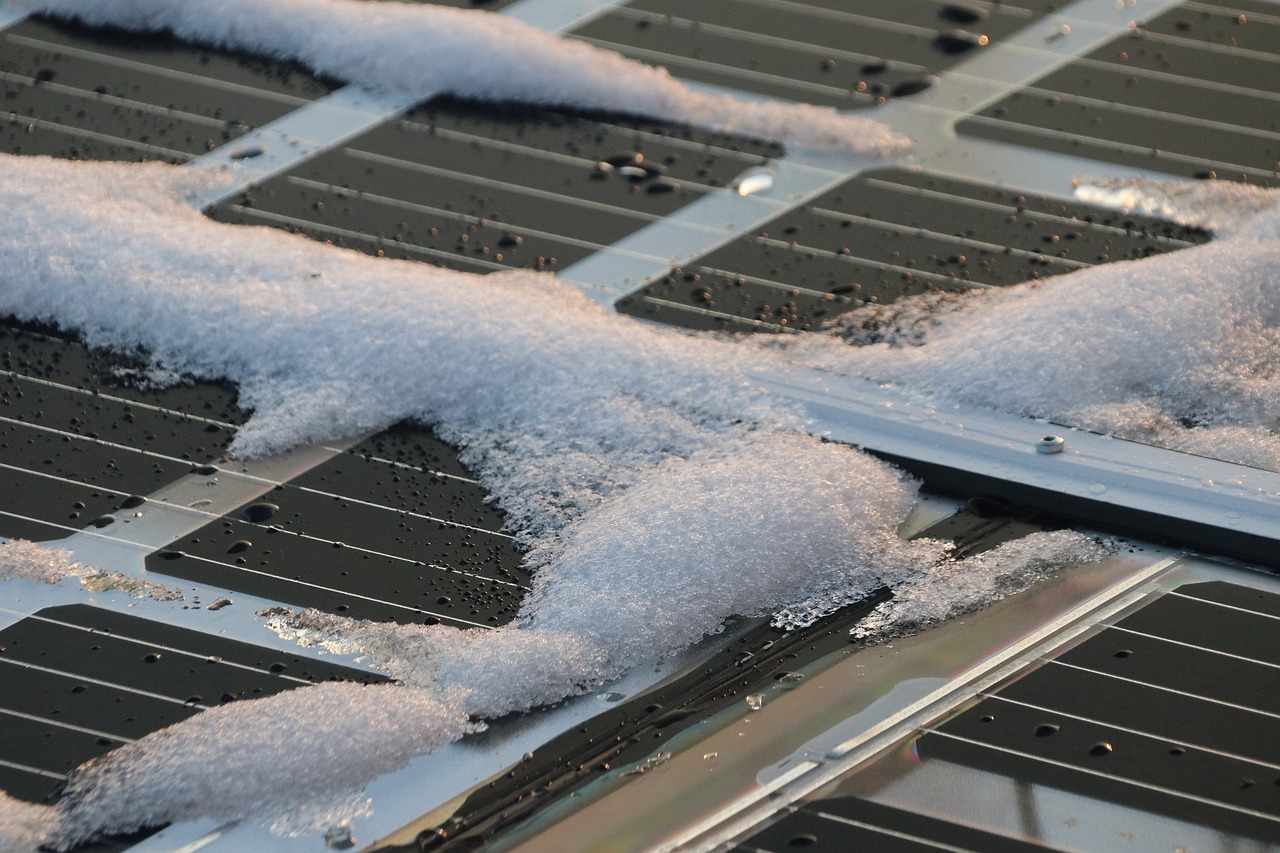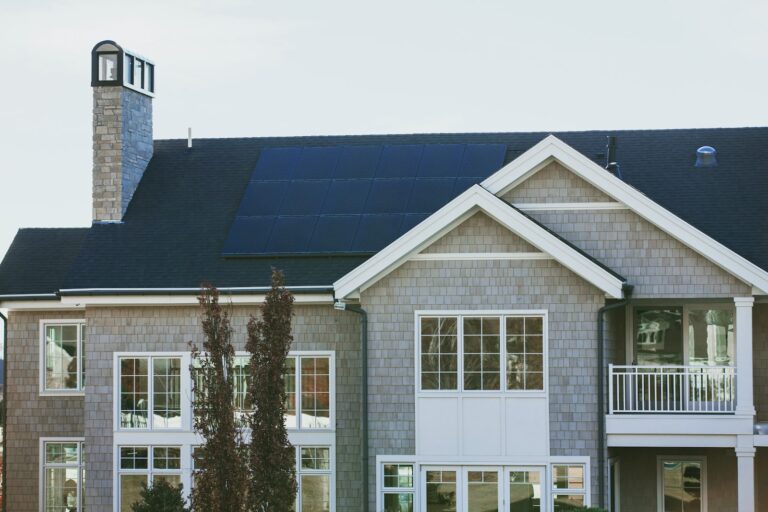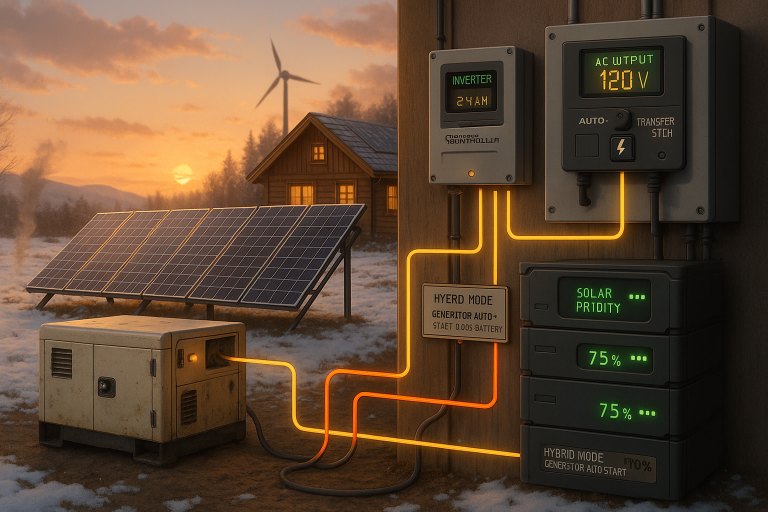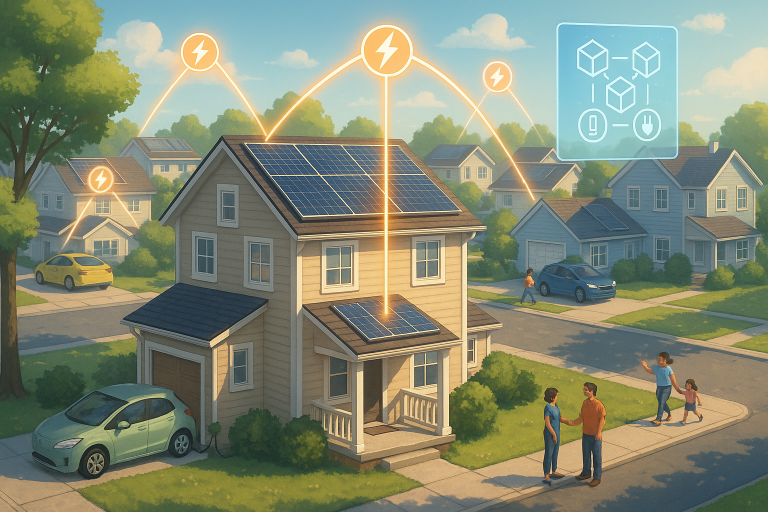What Happens When Snow Gets on the Top of Solar Panels?
When snow accumulates on top of solar panels, it can block sunlight from reaching the panels and reduce the amount of electricity they generate. However, the impact of snow on solar panels can vary depending on the amount of snow, the slope of the panels, and the ambient temperature.
In this article, we’ll explore the effects of snow accumulation on panel performance and the factors that determine its impact. We’ll also discuss snow removal methods and how they restore electricity generation.
Join me as we unravel the mysteries of snow-covered solar panels and discover the best practices for winter maintenance.
Join me as we unravel the mysteries of snow-covered solar panels and discover the best practices for winter maintenance.
Key Takeaways
- Snow accumulation on solar panels can block sunlight and reduce electricity generation.
- The weight of snow can cause damage to the panels.
- Solar panels covered in ice can still produce electricity, but output is reduced.
- Snow removal restores solar panels’ ability to generate electricity.
Impact on Electricity Generation
Typically, snow accumulation on solar panels can significantly reduce electricity generation. When snow covers the panels, it blocks sunlight from reaching the photovoltaic cells, which are responsible for converting sunlight into electricity. This reduced sunlight leads to lower energy production, resulting in a decrease in electricity generation.
The impact of snow on electricity generation depends on various factors such as the amount of snow, the slope of the panels, and the ambient temperature. Panels installed on a slope can allow the snow to slide off, maintaining normal electricity generation. However, flat or low-slope panels may experience reduced electricity generation until the snow is removed.
In extreme cases where the panels are completely covered by snow, there will be no electricity generation until the snow is cleared. Overall, snow accumulation on solar panels has a significant impact on their ability to generate electricity.
Effects on Solar Panel Efficiency
The snow accumulation on solar panels can significantly impact the efficiency of generating electricity. Here are four effects that snow can have on solar panel efficiency:
- Reduced sunlight exposure: Snow can block sunlight from reaching the solar panels, which leads to lower energy production. The more snow that covers the panels, the less sunlight they receive, resulting in decreased efficiency.
- Lower energy production: With reduced sunlight, the solar panels produce less electricity. This directly affects the efficiency of the panels, as they’re unable to generate their maximum power output.
- Weight damage: The weight of snow can cause damage to the panels, especially if it accumulates in large amounts. This can lead to structural issues and potentially affect the overall performance of the panels.
- Water damage: When the snow melts, it can create water damage if not properly managed. Water leakage or moisture buildup can harm the electrical components of the panels and decrease their efficiency.
It is crucial to address these effects and take appropriate measures to maintain the efficiency of solar panels during snowy conditions.
Potential Damage to Panels
When snow accumulates on the top of solar panels, it can potentially cause damage to the panels. The weight of the snow can put stress on the panels, leading to structural damage or even breakage.
Additionally, if the snow melts and refreezes, it can create ice dams, which can further damage the panels and their mounting systems. Water damage is also a concern when snow melts on the panels, as it can seep into the electrical components and cause corrosion or short circuits.
Furthermore, the constant presence of snow on the panels can hinder their ability to generate electricity, reducing their overall efficiency and performance.
Therefore, it’s important to properly remove snow from solar panels to prevent any potential damage and ensure optimal functioning.
Ice Accumulation and Its Consequences
Although ice accumulation on solar panels can pose challenges, there are ways to mitigate its consequences. Here are four important points to consider:
- Reduced electricity generation: Ice on solar panels can block sunlight, leading to a decrease in electricity production.
- Potential damage: The weight of ice can put strain on the panels, causing structural damage if not properly managed.
- Decreased efficiency: Ice reduces the efficiency of solar panels, resulting in lower energy production.
- Long-term effects: Leaving panels covered in ice for extended periods can damage them and reduce their overall efficiency.
To prevent ice accumulation, options include using heating systems or de-icing agents, maintaining cleanliness, and carefully choosing the location of the panels.
Regular maintenance and snow removal are key to ensuring optimal performance and longevity of solar panels.
Do Solar Panels Work When Covered in Ice?
Solar panels can still produce some electricity when covered in ice, but their output will be reduced. The amount of reduction will depend on the thickness and density of the ice, as well as the efficiency of the solar panel. In general, the thicker and denser the ice, the more it will block the sunlight that is necessary for the solar panel to produce electricity.
It is generally not recommended to leave them covered in ice for long periods of time. If the ice is allowed to build up on the solar panels, it can damage the panels and reduce their overall efficiency.
If you live in a cold climate and are concerned about ice accumulation on your solar panels, there are steps you can take to prevent it. One option is to use a heating system to melt the ice off the panels, but this can be expensive and may not be practical in all cases. Another option is to use a de-icing agent, such as a salt-based solution, to melt the ice and prevent it from re-forming. You can also try to minimize the amount of ice that accumulates on the panels by keeping them clean and free of debris, and by installing them in a location that is less prone to ice build-up.
Solar Panel Snow Removal.
Solar panel snow removal is the process of removing snow from the surface of solar panels in order to restore their ability to generate electricity. Snow can accumulate on solar panels and block the sunlight that is necessary for the panels to produce electricity. If the snow is allowed to build up, it can reduce the efficiency of the panels and potentially cause damage.
There are several methods that can be used to remove snow from solar panels, including the following:
- Using a snow rake: This is a tool specifically designed for removing snow from solar panels. It consists of a long handle with a small, flat rake head on the end. The rake can be used to gently scrape the snow off the panels from the ground.
- Using a brush: A soft-bristled brush can be used to gently sweep the snow off the panels. Be sure to use a gentle touch, as too much pressure can damage the panels.
- Using a de-icing agent: A salt-based de-icing agent can be applied to the panels to melt the snow and prevent it from re-forming. This method should be used with caution, as the de-icing agent could potentially damage the panels if it is not applied correctly.
- Using a heating system: Some solar panel owners may choose to use a heating system to melt the snow off the panels. This can be an effective method, but it can also be expensive and may not be practical in all cases.
It is important to be careful when removing snow from solar panels. Using too much force or using the wrong tools could potentially damage the panels. It is also important to follow the manufacturer’s instructions for your particular solar panel system.
Automatic Solar Panel Snow Removal.
There are several methods that can be used to remove snow from solar panels automatically, without the need for manual intervention. Some options include the following:
- Heating systems: Some solar panel owners install heating systems on their panels to melt the snow as it accumulates. This can be an effective method, but it can also be expensive to operate and may not be practical in all cases.
- Self-cleaning panels: Some newer solar panel models are designed with a self-cleaning feature that uses a small amount of electricity to heat the panels and melt the snow as it accumulates. This can be a convenient way to keep the panels clear of snow without the need for manual intervention.
- Automatic snow rakes: These are devices that are designed to automatically remove snow from the surface of solar panels. They typically consist of a long, telescoping arm with a rake or brush head on the end. The arm can be programmed to move along the panels and clear the snow as it accumulates.
- Automatic de-icing systems: These systems use a de-icing agent, such as a salt-based solution, to melt the snow on the panels as it accumulates. The de-icing agent is typically applied through a spray system that is activated when the snow begins to build up.
It is important to note that not all of these automatic snow removal methods may be suitable for all solar panel systems. It is always a good idea to consult with a professional or the manufacturer of your particular solar panel system to determine the best method for removing snow from your panels.
Winter Maintenance Tips for Solar Panels
I recommend performing regular winter maintenance on your solar panels to ensure optimal performance and longevity.
During the winter months, it’s important to take certain steps to keep your panels in good condition.
Firstly, regularly clean the panels to maximize sunlight absorption and remove any debris or leaves that may accumulate on them.
Secondly, inspect the panels for any loose connections or damaged components, as well as any signs of ice buildup or damage.
Additionally, check the mounting system for stability and integrity.
It’s also important to monitor weather forecasts to anticipate snowfall and clear any surrounding trees or branches that may fall on the panels.
Lastly, make sure the panels are securely installed to withstand snow load and consider having a backup power source in case of reduced energy production.
Conclusion
In conclusion, snow accumulation on solar panels can have a significant impact on their performance and efficiency. It can hinder electricity generation, reduce panel efficiency, and potentially cause damage.
However, with the right snow removal methods and winter maintenance practices, these challenges can be overcome. By keeping the panels clear of snow and ice, solar panel owners can ensure optimal electricity generation and enjoy the benefits of renewable energy all year round.





